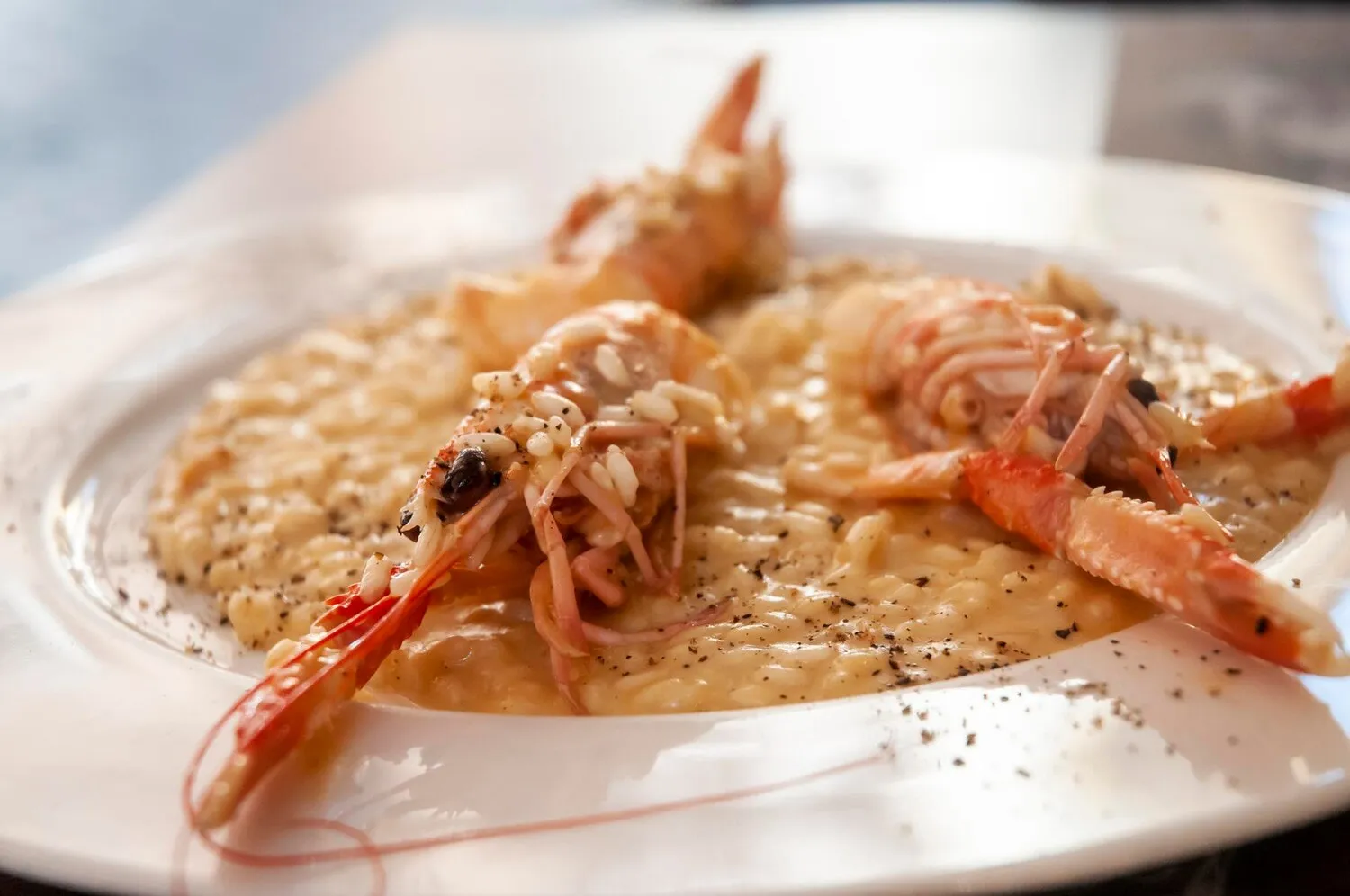
Lobster Risotto
Creamy risotto with succulent lobster meat.
Nutrition Facts
* The % Daily Value (DV) tells you how much a nutrient in a serving of food contributes to a daily diet. 2,000 calories a day is used for general nutrition advice.
Risotto, as a rice dish, has roots in Northern Italy, particularly the Po Valley where short-grain rice cultivation flourished. While the precise origin of adding lobster to risotto is harder to pinpoint, it likely emerged as coastal regions incorporated seafood into traditional risotto recipes, showcasing the availability of fresh lobster and elevating the dish to a more luxurious status.
Lobster Risotto, while not deeply embedded in ancient traditions like some other Italian dishes, represents a modern take on Italian culinary creativity, particularly the fusion of regional specialties and the elevation of simple ingredients to create refined and elegant dishes. It is often seen as a dish suitable for special occasions and celebrations.
Luxury and Celebration
Due to the cost of lobster, Lobster Risotto is often considered a luxury dish, reserved for special occasions, romantic dinners, or celebrations.
Regional Variations
While Lobster Risotto is not tied to one specific region, coastal regions of Italy often showcase similar seafood risottos, reflecting the availability of fresh seafood and regional culinary preferences.
Italian Culinary Innovation
The dish exemplifies the Italian approach to elevating simple ingredients through careful preparation and the combination of complementary flavors.
Lobster Risotto offers a rich and decadent flavor profile, balancing creamy textures with the sweet, briny taste of lobster.
The dominant flavor is undoubtedly the sweet and delicate taste of lobster, which infuses the creamy risotto with a subtle oceanic essence. The risotto itself provides a savory backdrop, typically achieved through the use of butter, Parmesan cheese, and a flavorful broth (often fish or seafood-based). White wine adds acidity and depth, while aromatic vegetables like shallots and garlic contribute subtle layers of complexity. Herbs such as parsley, chives, or tarragon often brighten the finish.
Rice Selection
Use Arborio, Carnaroli, or Vialone Nano rice. These varieties have a high starch content, essential for creating a creamy risotto.
Stock Quality
Use a high-quality seafood or fish stock for the best flavor. Homemade is ideal, but good quality store-bought stock can also work. Vegetable stock may also work in a pinch.
Lobster Preparation
Cook the lobster separately to ensure it's perfectly cooked. Overcooked lobster will be tough and rubbery. Reserve the lobster cooking liquid to enhance the flavor of the risotto.
Patience is Key
Stir the risotto frequently and add the stock gradually, allowing the rice to absorb the liquid and release its starch. This is crucial for achieving the creamy texture.
Finishing Touches
Stir in cold butter and Parmesan cheese at the end to create a rich and glossy finish.
Explore additional Seafood dishes and restaurants
Explore SeafoodDiscover top dining spots and culinary experiences in Halifax.
Explore HalifaxLearn more about the food culture, restaurant scene, and culinary heritage of Canada.
Explore Canada